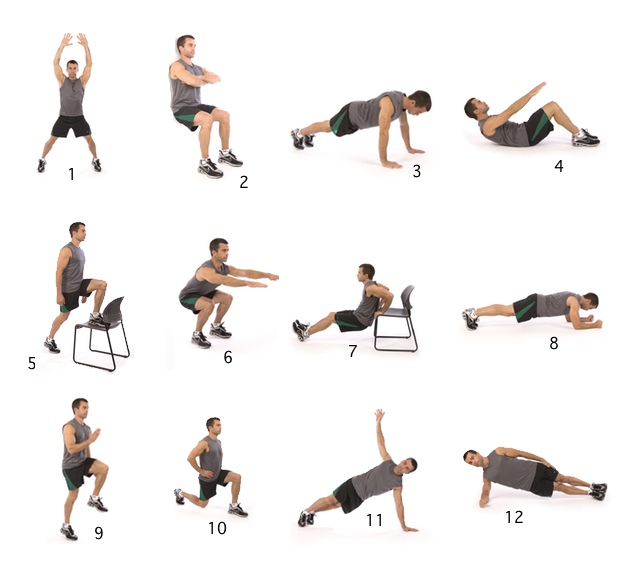
Interval Training! Is This Something for You?
 Chatter about the best ways to diet, exercise, eat, vacation, and in general live your life can be found in every magazine cover in the stores. We are constantly confronted with “the newest” great miracle approach. Confusion can often be created as the information is imparted; I am often left wondering why the Paleo diet is so much more superior to the South Beach or Atkins. And what is the grapefruit diet anyway?
Chatter about the best ways to diet, exercise, eat, vacation, and in general live your life can be found in every magazine cover in the stores. We are constantly confronted with “the newest” great miracle approach. Confusion can often be created as the information is imparted; I am often left wondering why the Paleo diet is so much more superior to the South Beach or Atkins. And what is the grapefruit diet anyway?
Unfortunately I am not going to enlighten you about the newest diet trends in this blog, but I will offer some information on the newer trends in exercise in this blog entry. Have you been hearing about interval training? Terms that are hitting the news are varied; High-Intensity Interval Training (HIIT), Sprint Interval Training (SIT), High-Intensity Circuit Training (HICT), Tibata, Gibala, Cross Fit, Soldier Fit, and many others.
Deciphering these terms can be a challenge and leave you wondering just how you should change your exercise routine to maximize the results. I will try to offer some general guidance to reevaluate your current fitness routine. Let me begin with the established tradition and work my way into the current “interval training” topic to get you moving your fitness activity into a new direction.
Traditionally, fitness training was broken down into two parts: aerobic and resistive training. In aerobic training, the traditional recommendation was moderate intensity, continuous, heart pumping exercise (running, brisk walking, biking, etc.) for 30-60 minutes at least 3-5 times per week. This translated to your primary care physician telling you to exercise everyday for at least 20-30 minutes.
Resistive training is all the activity you do to boost your strength level; weight or equipment strength training, pushups, pilates, power yoga are all examples of resistive exercises. Traditional recommendations for building strength are 2-3 times per week. You select a weight level during your training to allow you to complete 8-12 repetitions working your muscle at about 40-80% intensity; you are not trying to be working at your maximal level during these sets. Each exercise is repeated in 2-3 sets of 8-12 repetitions, you can rest 2-3 minutes between set-ups of different exercises. These workouts cover 2-4 exercises in each large muscle group; legs, arms, trunk, abdominals for example.
Traditional is effective. However, in this fast paced world, these exercise routines are often missed or avoided due to the lengthy commutes, long work days, and competing demands of the American workforce. Time, time, time…is always the limiting factor for many of us with great intentions but limited commitment.
To address the limitations and time demands of the traditional exercise recommendations, the current trend is Interval Training. Interval training is designed to maximize results, while minimizing the time necessary to get or stay fit. Interval training has been shown to be effective and efficient and utilize a variety of program approaches. Often with interval training approaches, the difference is defined by varying the program intensity, times, and individual exercise stations. These approaches include popular varieties; High-intensity circuit training (HICT), Sprint interval training (SIT), high –intensity interval training (HIIT), and Turbulence training ( utilized by many popular programs such as Cross Fit, Soldier Fit, P90X, T25, Insanity) to name a few.
Comparing interval training to traditional training can be put into simple terms. In general, traditional training takes longer to complete each week and the intensity of traditional workouts range in the low to moderate level meaning you are able to chat to a friend during this exercise. In interval training, regardless of the program you follow, the intensity level for short spurts of an exercise is higher than traditional programs. You are often encouraged to work at moderate to high or maximal output levels but for brief periods. This creates what is called an interval.
Varying the interval repetition, duration, exercise and intensity create all the different interval approaches. High-intensity circuit training (HICT), for example, is a 7-8 minute exercise program. Exercises are performed for 30 seconds, with a 10 second transition time between individual activity bouts. Usually this program includes 9-12 different exercises. The set of 9-12 exercises is coined “the circuit”. The 30 seconds of work is the “interval”. The objective of a HICT workout session is to perform a series of exercises in quick succession, use proper form and technique, and complete each 30 second effort at a high intensity with minimal rest between exercises. The goal of the interval training session is to complete as many repetitions of the exercises in 30 seconds and move as fast as you can with safe technique.
The results of this type of interval training are showing merit. By combining resistive and aerobic training and using high intensity brief efforts, research is showing efficient loss of body fat, and metabolic benefits such as an “after-burn” effect. This after-burn is the effect when after a workout, you get a sustained higher metabolism called the “after-burn” that can be burning more energy for periods after exercising that have been shown to last up to 48 hours post in some elite athletes. In other words, the after-burn is effectively burning higher amounts of calories for hours after the interval workout is completed.
General guidelines for any interval or traditional training program still incorporates standard steps including a warm-up, workout, and cool down followed by stretching. Any person can benefit from exercising. However, some are better suited for one type of exercise over another. If you do not exercise now, any exercise can be helpful if it is a movement you tolerate well and can perform consistently without pain. Picking an exercise program that suits your health, fitness level, and activity tolerance can be critical to enjoying and benefiting from a fitness program.
If interval training seems tempting because it takes so little time to complete each day, think again about the intensity level of this exercise program before you commit. This exercise program is completed at a high intensity level -- -you work as hard as you can for a short period of time. It is best suited for those who have completed a traditional exercise program for several months and are active and exercising regularly. Intervals are for those seeking a more advanced level of training.
For those new to intervals, a good entry point to interval training may be to select a high-intensity circuit training (HICT) program that includes 9-12 exercises you are familiar with and can complete with good form. Once the exercise circuit is selected, begin your interval fitness program in the HICT format.
Once your fitness level is improved, you can than explore many of the other high intensity interval options more safely. These other options include Tibata, Gibala, P90X,, SIT, HIIT, and many others. These programs are often more demanding and for a novice fitness buff could be well tolerated in some cases but do increase your risk of injury when starting interval programs with less strength and poor aerobic fitness.
However, even someone who is newly committed to exercise can make their own interval safely. By picking something you enjoy and tolerate well, such as walking or biking, and adding 8 repeats of high output effort above your normal level of intensity lasting 20-30 seconds, this can be a self designed interval that can boost your metabolism and turn a typical workout into new interval experience. Try pushing your effort during this 20-30 seconds to a higher gear, recover from the effort for 10 seconds , and than repeat the cycle 8 times. The metabolic benefits can be worth a bit of style change during your standard workout and be a nice approach to adding interval training to your plate without making your entry into interval training too demanding at first.
For people already fit but looking to make a change, considering any of the interval training programs can be a great way to shorten the time of your workout while optimizing your fitness benefits. It can boost your VO2max, shorten your recovery, boost your fat metabolism and energy synthesis by increasing muscle resting glycogen while decreasing reliance on non-oxidative energy metabolism, and move your peak performance levels up another notch.
For those well conditioned athletes, making the addition of a Tibata interval or SIT program may offer great benefits and heighten your energy levels while training. Tibata can be completed in 4 minutes per cycle and many athletes incorporate 2-3 cycles per session of Tibata.
A Tibata interval is 8 repeats of 20 second maximal efforts with a 10 second recovery interval. These are very high, 170% effort bouts with a incomplete recovery of 10 seconds and will stress your metabolism to another level. Tibata workouts can be completed 2-4 times per week with excellent results.
In review, any exercise done properly and well tolerated is better than no exercise at all. Changing up your exercises routine periodically throughout the year is a great way to reset your body’s metabolism for increased gains, challenge your strength with novel demands, and keep your fitness routines interesting. If time is a competitor to your exercise success, consider interval training to pull you back to your fitness goals with consistency and improved results.
In an article by Klika and Jordan published in , the authors selected the following 12 station HICT program using no equipment to avoid cost and for ease of implementation at home or office. I have provided the HICT program as published below for your reference. To reduce risk of injury, I am including adaptations to two of the selected exercises for you to take into consideration.
First, in exercise #5 step up onto chair, if you have any balance or knee problems, you may want to adapt this exercise. A simple solution could be stepping up onto a stair and using a rail if needed. Secondly, in exercise #7 triceps dip on chair, this is not necessarily an easy exercise on the anterior shoulder. A good substitution for this exercise could be triceps overhead dumbbell press or a close hand position with elbows tight at your side push-up.
